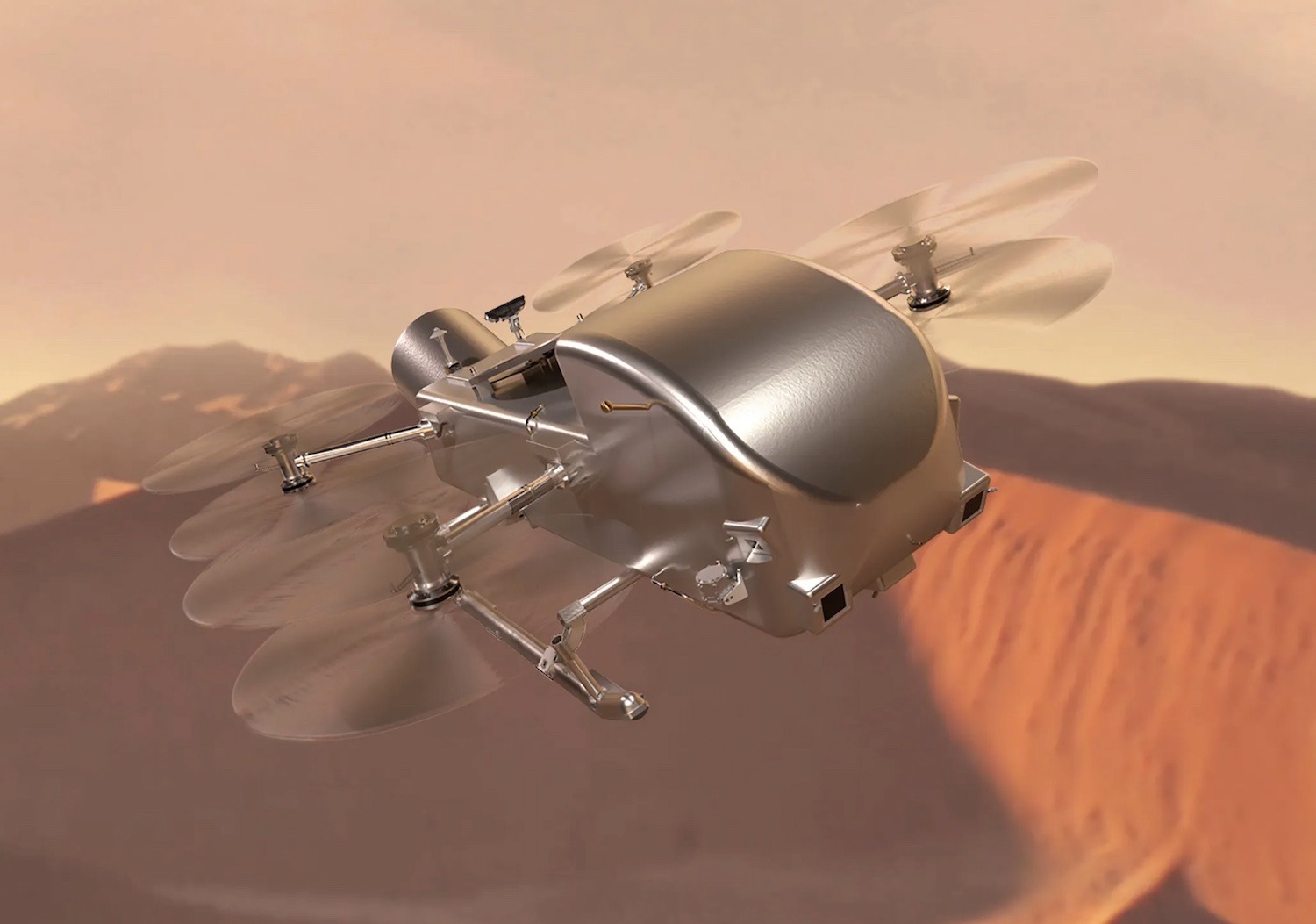This week, NASA officially approved the launch of the Dragonfly drone mission to Saturn’s moon Titan. The previously postponed mission will launch in July 2028. The goal is to land a car-sized drone on Saturn’s largest moon in 2034 – six years after launching from Earth.

Lockheed Martin, which is part of the Dragonfly team led by the Johns Hopkins University Applied Physics Laboratory, shared a video showing how Dragonfly would reach the surface of Titan in 10 years.
According to the plan, the spacecraft that transports Dragonfly from Earth will release a drone near the surface of Titan. The landing will be carried out thanks to four Dragonfly rotors, which will be turned on a few minutes before descending to the surface.
To a certain extent, this process is similar to how NASA landed the Perseverance rover on Mars in 2021 — a dramatic event that was captured by high-resolution cameras. However, the Perseverance landing was more difficult, as the spacecraft used eight braking rocket engines on a separate launching platform and additional cables so that the rover gently touched the surface of the Red Planet.
Although the Dragonfly landing looks easier to implement, failures can occur at any stage of the mission, especially at such a long distance. Therefore, on the day of the Dragonfly landing on Titan, NASA’s tension will be maximum until the mission operators receive confirmation of a successful landing.
Titan your seatbelts!@NASA has confirmed that development of the Dragonfly rotorcraft will continue into final design, construction and testing as it progresses toward its historic mission to Saturn's moon Titan, launching in July 2028.
— Lockheed Martin Space (@LMSpace) April 18, 2024
We are excited to help bring Dragonfly… pic.twitter.com/v1oiElI8fx
Titan has certain similarities with Earth at an early stage of its formation, especially with its dense atmosphere. That is why this moon attracts the attention of scientists. It is hoped that scientific research conducted by the drone will help scientists learn more about the origin of life on our planet.
The drone will not be the first aircraft to fly to another celestial body. Except Earth, as this feat was accomplished by NASA’s Ingenuity helicopter, which made the journey to Mars. The huge success of the Ingenuity mission, which officially ended earlier this week after 72 flights to the Red Planet, would give a big boost to the team to prepare Dragonfly for a flight to Titan.
The Dragonfly mission was selected as part of NASA’s New Frontiers program. It includes the already launched New Horizons mission to Pluto and the Kuiper Belt, the Juno mission to Jupiter and the OSIRIS-REx mission to the asteroid Bennu.
Dragonfly was originally scheduled to launch in 2027. But after a budget review and delays due to the COVID 19 pandemic, the mission was postponed a year later.
Earlier, we reported on how NASA tested a prototype rotor for a mission to study Titan.
According to space.com
Follow us on Twitter to get the most interesting space news in time
https://twitter.com/ust_magazine


